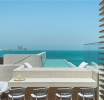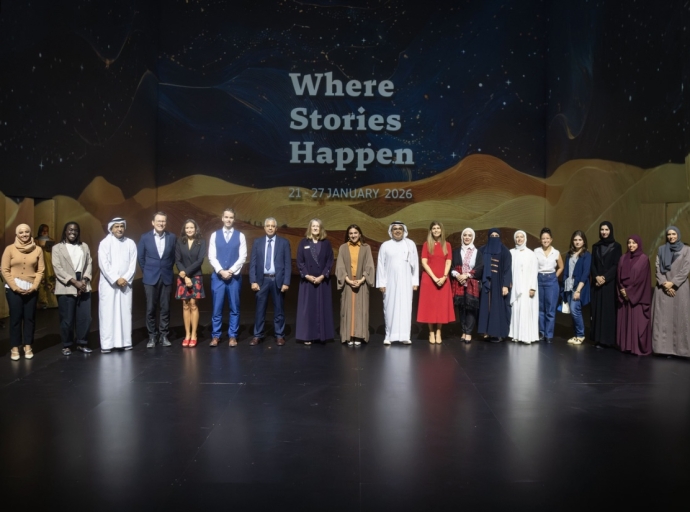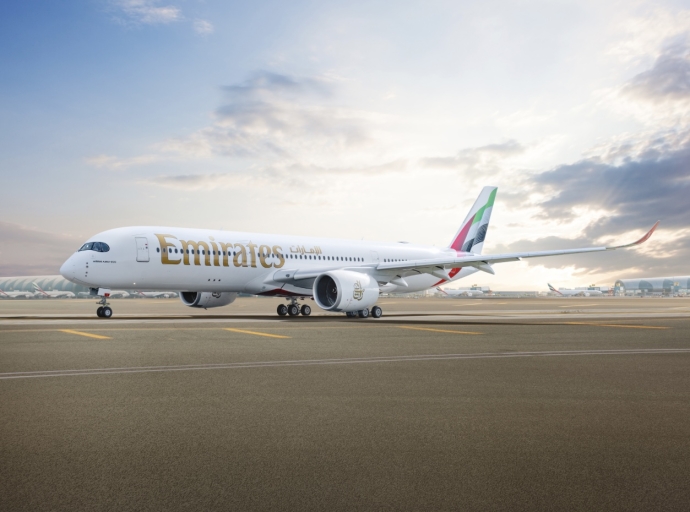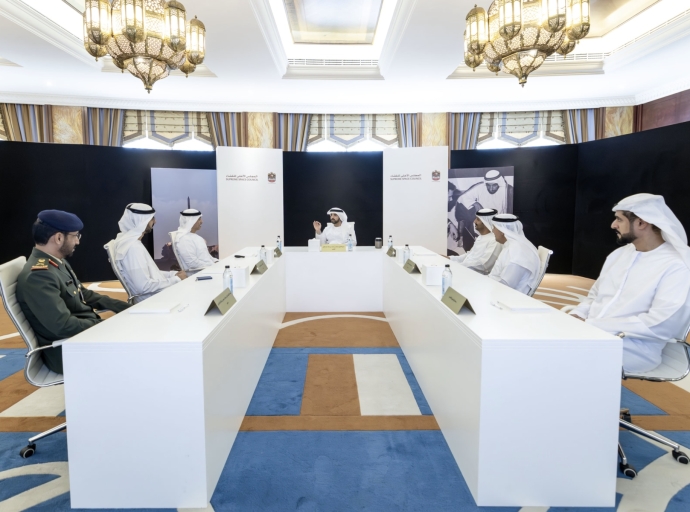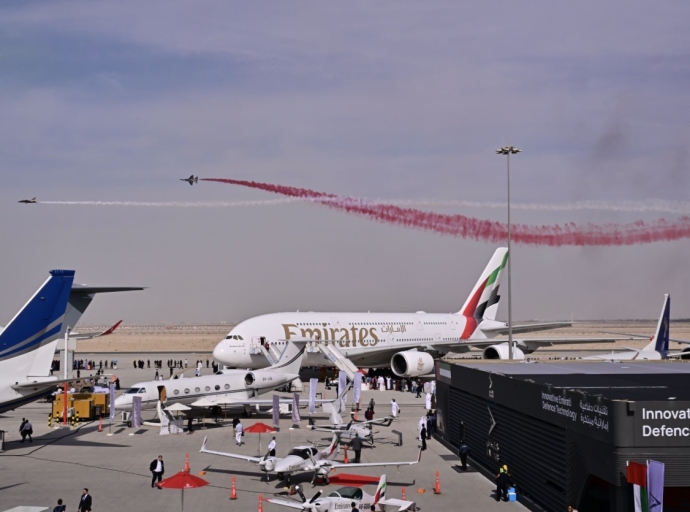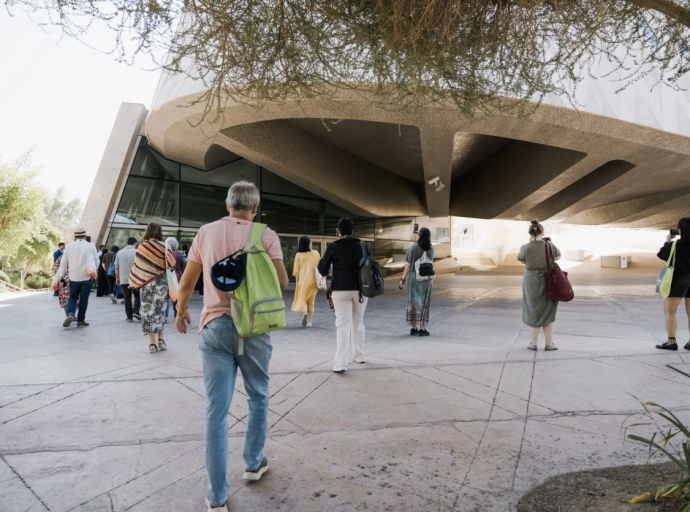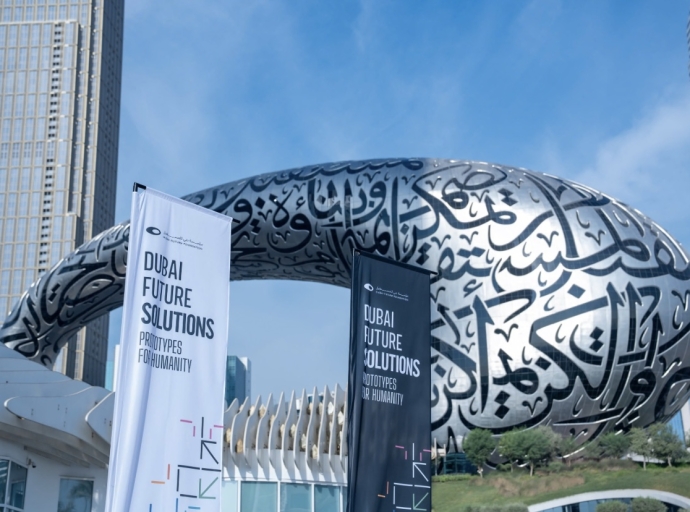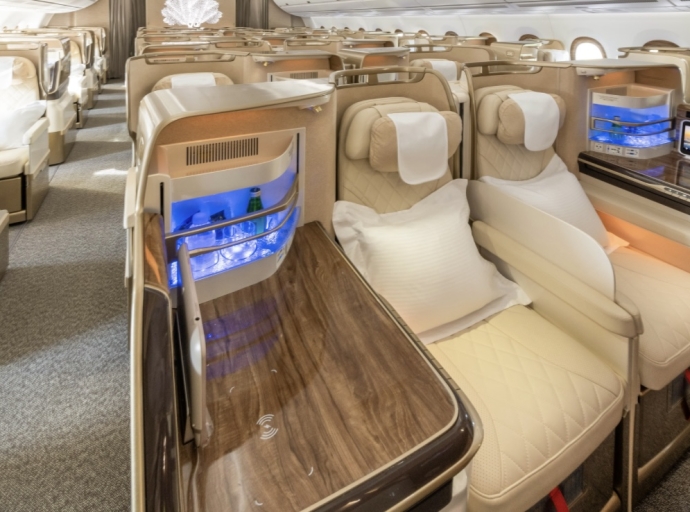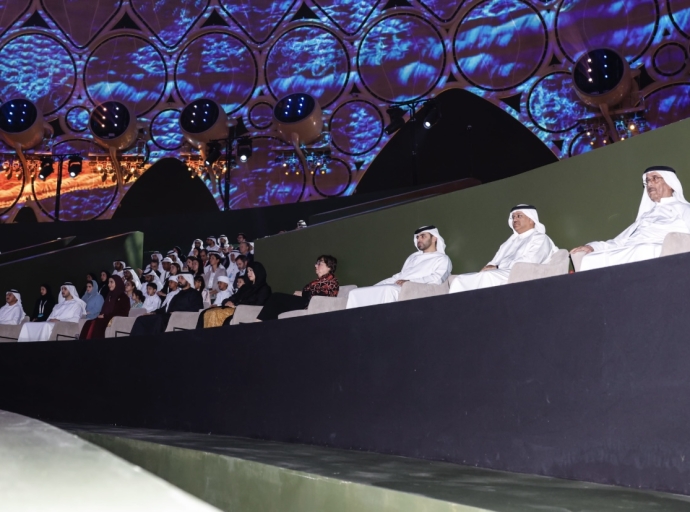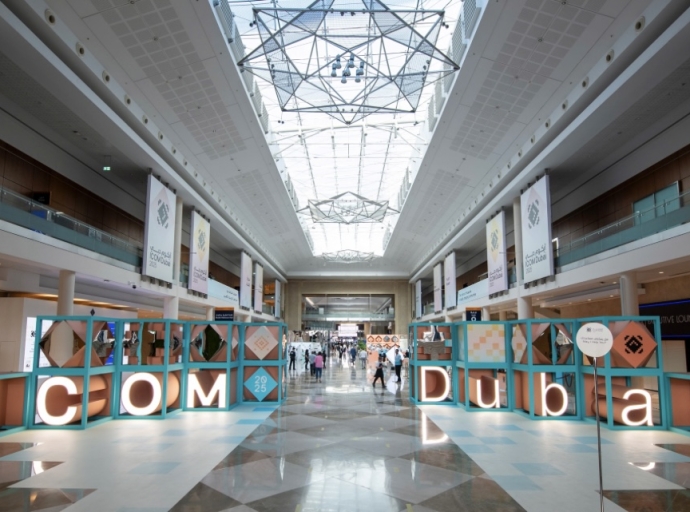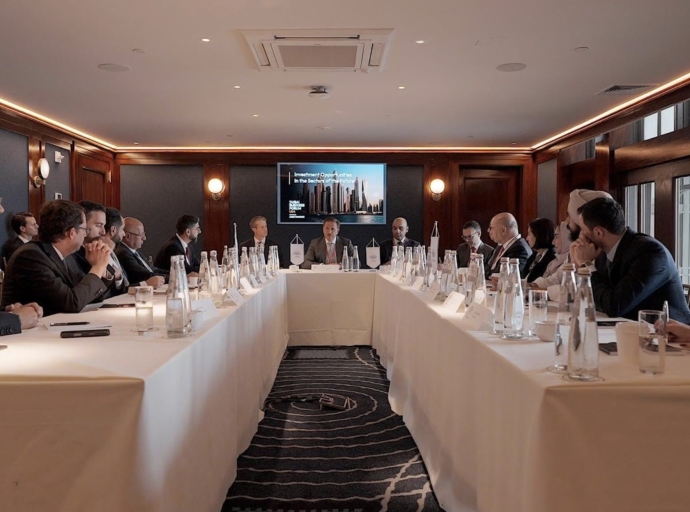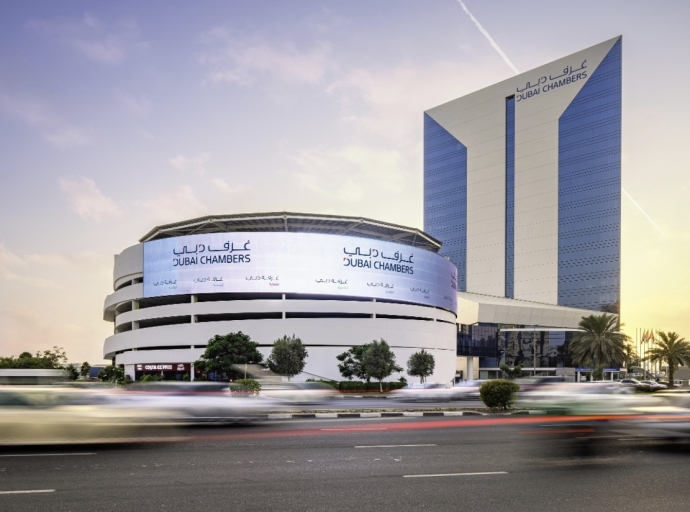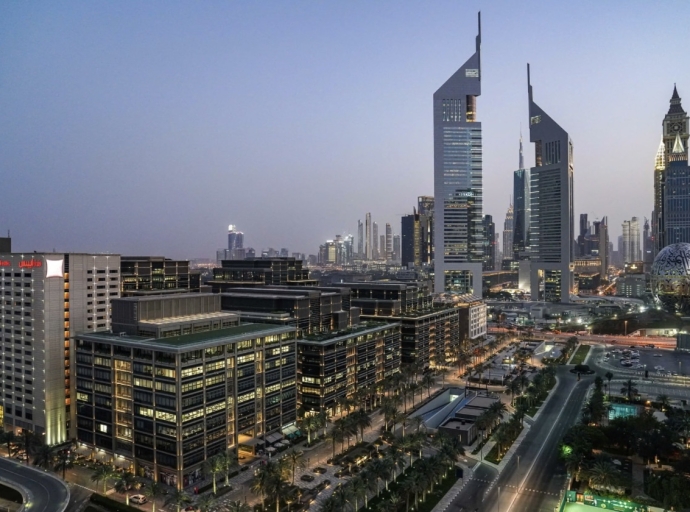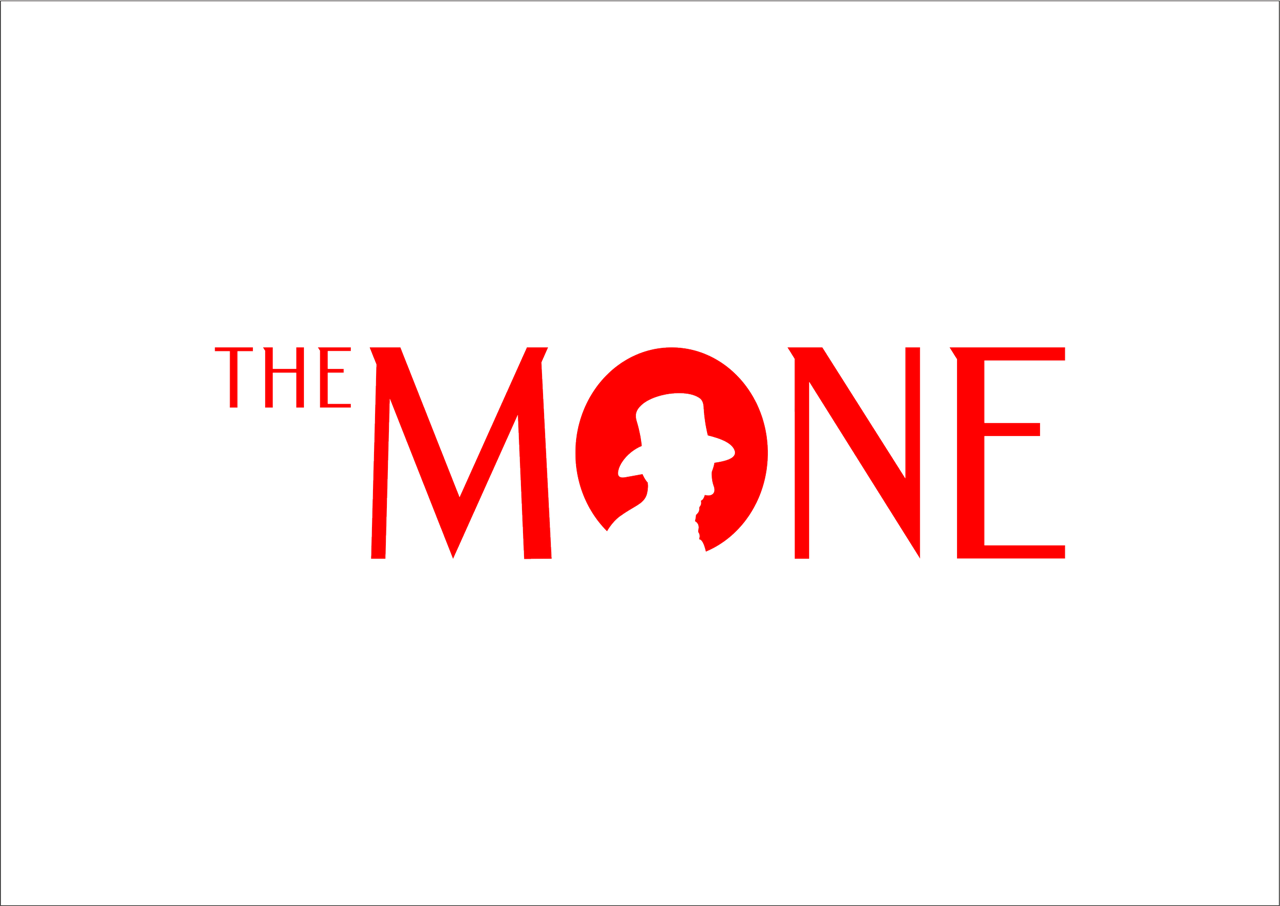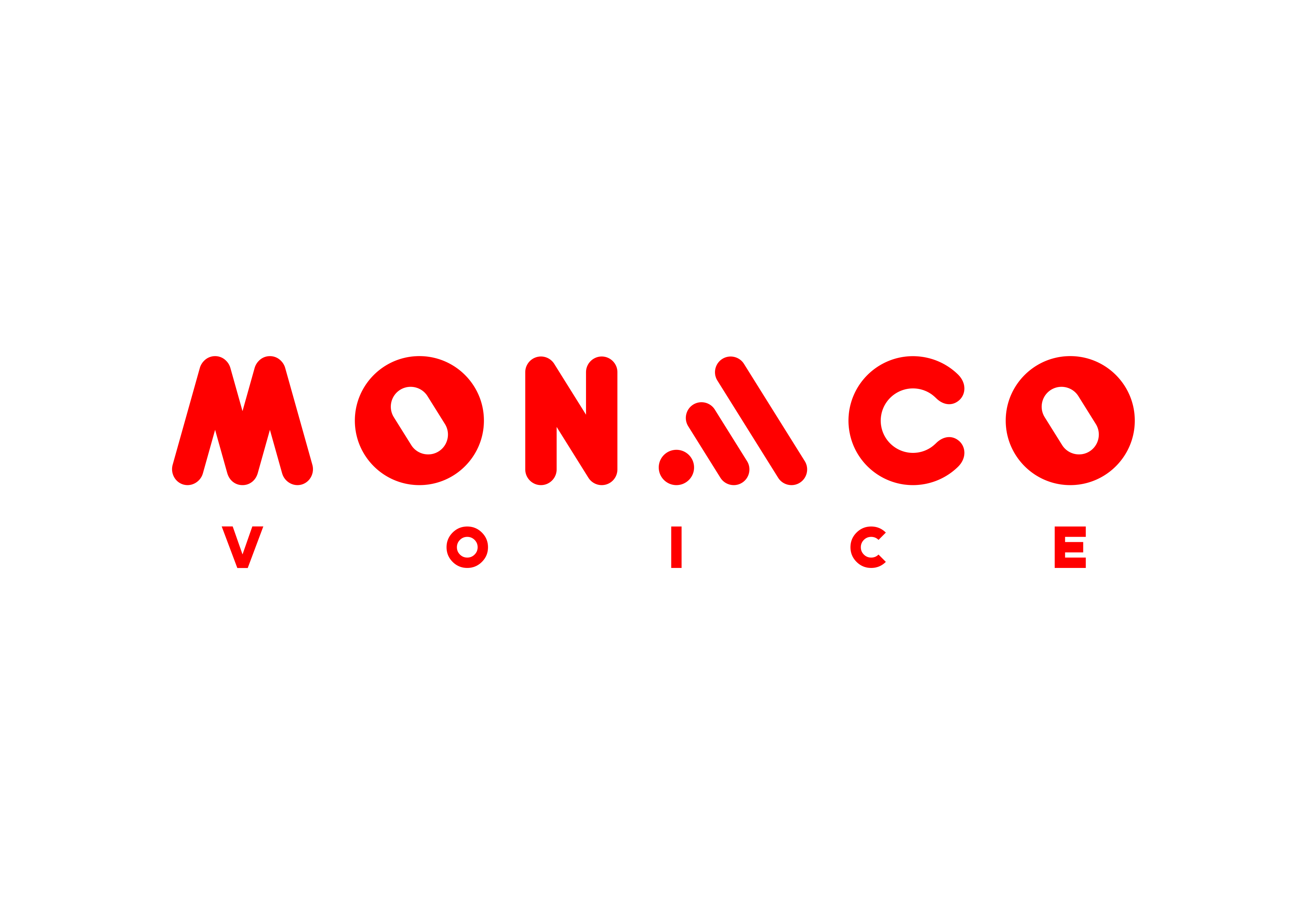All Stories
Meraas, part of Dubai Holding Real Estate, has introduced The Edit at d3, a new residential complex intended to deepen the role of Dubai Design District (d3) as a hub for contemporary urban living.
The project comprises three waterfront towers along the Dubai Canal, near the recently launched Atélis at d3. Together, they will house 557 units, including one- to four-bedroom apartments and a selection of penthouses.
The buildings adopt a streamlined architectural approach, marked by rounded edges and continuous balcony lines. Interior sky gardens are designed to bring natural light and greenery into upper levels, where residents will find landscaped terraces, wellness areas and shared lounges.
Amenities include multiple pools, co-working and creative studios, children’s and family spaces, a fitness and yoga facility, gaming areas and a private cinema. The development connects directly to d3’s canal promenade, offering immediate access to galleries, cafés and fashion and design studios.
Khalid Al Malik, Chief Executive Officer of Dubai Holding Real Estate, described the project as aligned with the city’s focus on design and innovation, saying it reflects Meraas’ broader effort to elevate residential districts across Dubai.
The launch comes as d3 advances a major expansion that will add roughly 500,000 square feet of built-up space and attract additional creative industries, cultural venues and dining concepts. The Edit at d3 is positioned to place residents at the center of this next phase of growth.
Photo credits: Government of Dubai Media Office
The Emirates A350 entered the spotlight at the 2025 Dubai Airshow, marking its first public flypast since joining the fleet in November 2024. The aircraft led a coordinated aerial display alongside the airline’s Boeing 777 and A380, the first time Emirates has flown all three widebody types together in formation.
The flypast formed part of a 60-aircraft procession designed to highlight the UAE’s aviation capabilities. Emirates opened the commercial segment of the display, followed by other national carriers and a contingent of military aircraft and helicopters.
During the demonstration, the A380 flew at 500 feet, the Boeing 777 at 700 feet, and the A350 at 900 feet, passing over the runway at Al Maktoum International Airport before thousands of spectators. The event remained one of the show’s most anticipated features.
The Emirates contribution was led entirely by Emirati flight crews. Captain Mubarak Al Mheiri piloted the A380 at the front of the formation, with Captain Ali Almarzooqi commanding the Boeing 777 and Captain Rashed Murshed piloting the A350. Captain Khalid Akram, Deputy Chief Pilot Boeing, served on the Flight Control Committee overseeing commercial operations for the flypast.
Preparing the display required months of coordination across the UAE aviation sector, involving Emirates operational teams, other national airlines, the Ministry of Defence, the UAE Military, air-traffic controllers, the Dubai Airshow Flying Control Committee, and both the DCAA and GCAA. Planners accounted for air-traffic flows, flight paths, and weather conditions to ensure a controlled and precise performance.
Photo credits: Government of Dubai Media Office
The fourth edition of the Dubai Future Forum, regarded as the world’s largest gathering of futurists, opens tomorrow at the Museum of the Future. Held under the patronage of His Highness Sheikh Hamdan bin Mohammed bin Rashid Al Maktoum, Crown Prince of Dubai, Deputy Prime Minister and Minister of Defence of the UAE, and Chairman of the Board of Trustees of the Dubai Future Foundation (DFF), the event will run from 18 to 19 November.
Organised by the Dubai Future Foundation, the Forum will convene more than 2,500 experts, decision-makers, and futurists, along with representatives from 100 global organisations. Over 200 speakers will participate across more than 70 sessions focused on five themes: Exploring the Unknown, Empowering Societies, Reimagining Health, Optimising Systems, and Foresight Insights.
This year introduces dedicated Learning Days on 17 and 20 November, developed with regional and international partners. These sessions cover foresight and global security, strategic philanthropy, wearable technologies, urban resilience, and the future of media. A closed-door roundtable hosted by Arab News and the Dubai Future Foundation examined how the media sector can adapt amid rapid technological change, with emphasis on governance, policy, and trust in the age of artificial intelligence.
Additional Learning Day programmes explored global security through foresight tools, the future of philanthropic impact, advances in wearable technologies, and the resilience of cities facing climate challenges.
The Forum’s opening day will feature remarks by Khalfan Belhoul, CEO of Dubai Future Foundation. A headline session, “Navigating Change: Leadership in the Age of AI and Global Transformation,” will include Michael Miebach, CEO of Mastercard, and Omar Sultan Al Olama, Minister of State for Artificial Intelligence, Digital Economy and Remote Work Applications. Panel discussions will address long-term governance, regenerative societies, economic resilience, proactive medicine, changing consumer behaviour, and developments in global research.
In parallel, the Prototypes for Humanity – Dubai Future Solutions Exhibition 2025 opened today at AREA 2071 in Emirates Towers. The exhibition showcases 100 projects selected from more than 3,000 submissions representing participants from over 1,200 universities in 120 countries. Five innovators will be recognised at the conclusion of the exhibition.
The Forum will also announce the inaugural Dubai Foresight Awards, which honour contributions across three categories: Foresight Change Makers, Foresight for People, and Foresight for the Planet. The opening day will host the Future Stories Awards Ceremony, recognising writers whose work encourages future-oriented thinking.
Dubai Future Forum 2025 is supported by strategic partners including Dubai Municipality and Emirates Global Aluminium, alongside international organisations, creative institutions, and universities.
Photo credits: Government of Dubai Media Office
Emirates is moving into the next phase of its multi-year fleet retrofit, preparing 111 aircraft - 60 Airbus A380s and 51 Boeing 777s - for upgraded cabins and new onboard technology beginning August 2026. The programme, one of the largest of its kind, will introduce redesigned seating, an updated onboard lounge for the A380, a fully refreshed in-flight entertainment system, and enhanced connectivity through Starlink.
The work will be carried out by Emirates Engineering in coordination with Airbus, Safran, Recaro, Panasonic, Starlink, and UUDS. These partners will supply new Business Class seating, premium-economy designs, economy seats tailored for long-haul travel, and Panasonic’s Astrova entertainment platform, which will be installed on all aircraft included in this phase.
Sir Tim Clark, president of Emirates Airline, said the project reflects the carrier’s commitment to keeping product standards aligned across its wide-body fleet. He noted that the goal is to match the innovations currently entering service on new aircraft, including upgraded seating privacy, improved charging options, and redesigned cabin features.
Business Class cabins on both aircraft types will be fitted with Emirates’ newest seat generation, inspired by the Safran S-Lounge design introduced on the A350. Premium Economy will feature Recaro seats with mechanical recline, leg and footrests, and 13.3-inch screens. Economy cabins will adopt Safran’s Z400 long-haul seat with an eight-way adjustable headrest.
The Astrova entertainment system will bring 4K OLED screens, HDR10+ capability, spatial audio, and high-capacity USB-C charging. Bluetooth pairing and Panasonic’s Arc 3D moving map will also be standard. Emirates will link these features with its Skywards programme to support content recommendations based on viewing history.
Starlink connectivity, already confirmed for the fleet, will be installed in parallel with the cabin work to accelerate rollout across global routes.
The retrofit programme has expanded several times since it was first announced in 2021. Emirates now plans to refurbish 219 aircraft in total. So far, 76 have been completed, with each A380 undergoing about 22 days of work and each Boeing 777 about 18 days. Two aircraft are delivered back into service each month.
Photo credits: Government of Dubai Media Office
His Highness Sheikh Mansoor bin Mohammed bin Rashid Al Maktoum, President of the UAE National Olympic Committee, and Her Highness Sheikha Latifa bint Mohammed bin Rashid Al Maktoum, Chairperson of the Dubai Culture and Arts Authority, attended the opening ceremony of the 27th General Conference of the International Council of Museums (ICOM Dubai 2025). The gathering, held under the patronage of His Highness Sheikh Mohammed bin Rashid Al Maktoum, marks the first time the conference is hosted in the Middle East, Africa, or South Asia.
The ceremony took place at Al Wasl Plaza in Expo City Dubai, where a 20-minute production used 2D and 3D projections, live performance, and original music to present Dubai’s development from its founding on Dubai Creek in 1833 to its current role as a regional cultural center. Presented by Dubai Culture and Expo City Dubai, the event used the plaza’s 360-degree projection surface to recount the city’s early settlement, maritime economy, growth into a trading hub, and emergence as a diverse urban center.
Sheikha Latifa noted that the production reflected Dubai’s longstanding emphasis on cultural exchange and praised the collaboration between the participating institutions and creative teams. She highlighted the contributions of the artists and designers whose work connected the city’s past with its contemporary identity.
The ceremony was attended by several members of Dubai’s ruling family, regional dignitaries, senior officials, and Dr. Emma Nardi, President of ICOM.
Directed by Amna Abdullah Abu Alhoul, the show was created by a team of Emirati and international artists, including poet Ali Al Khawar, composer Fayez Al Saeed, vocalist Fatma Al Hashemi, narrator Huda Al Fahad, and cultural content director Reem Abdullah Al Ghaith. Expo City Dubai’s creative team produced the performance following extensive historical research into Gulf maritime records and regional archives.
The production transformed Al Wasl Plaza’s 130-metre dome using 252 laser projectors, more than 813 lighting units, 27 sound arrays, and over 150 speakers, blending traditional Emirati rhythms with contemporary orchestral elements. Organised with the support of Expo City Dubai, du, and Dubai’s Roads and Transport Authority, the event welcomed delegates of ICOM Dubai 2025 and underscored Dubai’s continued focus on culture, innovation, and international exchange.
Photo credits: Government of Dubai Media Office
Dubai International Chamber has reported significant growth in foreign business engagement during the first nine months of 2025, underscoring the emirate’s appeal as a destination for global investment.
Between January and September, the chamber facilitated the relocation of 261 companies to Dubai, a 65 percent increase from the 158 companies recorded in the same period in 2024. Of these, 44 were multinational corporations, up from 40 last year, marking a 10 percent rise. Small and medium-sized enterprises (SMEs) accounted for 217 of the new arrivals, an 84 percent increase from the previous year.
H.E. Sultan Ahmed bin Sulayem, Chairman of Dubai International Chamber, emphasized the institution’s focus on attracting high-value foreign investment and expanding opportunities across key sectors in line with the Dubai Economic Agenda (D33). He noted that the chamber’s international network assists Dubai-based companies in entering overseas markets while showcasing the emirate’s competitive advantages to global business communities.
In line with the Dubai Global initiative, which aims to establish 50 international representative offices by 2030, the chamber opened five new offices in Dhaka, Cape Town, Bengaluru, Bangkok, and Toronto. These offices organized 376 roundtable meetings during the first nine months of 2025 to promote Dubai as a global business hub and facilitate foreign investment.
The chamber’s international network functions as a strategic link between Dubai and global markets, supporting two-way investment flows and helping companies expand from the emirate into 30 priority international markets. The offices also provide insights into Dubai’s business environment, assisting multinational companies in establishing a local presence and leveraging the city as a gateway to broader markets.
Photo credits: Government of Dubai Media Office
Dubai World Trade Centre Authority (DWTCA) has launched a new framework allowing companies registered in the DWTC Free Zone to issue multiple classes of shares, a move aimed at enhancing capital structuring and corporate governance. The initiative provides businesses with greater flexibility to scale, attract investment, and innovate, reinforcing Dubai’s role as a global business hub and supporting the emirate’s economic agenda, D33, which seeks to double the economy by 2033.
Under the framework, companies can now offer a variety of share classes beyond ordinary shares, including preference, founder’s, restricted, and tiered structures such as class A/B/C/D shares. These shares can be structured in a company’s Memorandum of Association to define rights and restrictions related to dividends, voting powers, transfer conditions, and redemption or conversion options, while safeguarding minority shareholders. The framework also includes governance measures designed to maintain transparency and protect shareholder interests.
Abdalla Al Banna, vice president of Free Zone Regulatory Operations at DWTC Free Zone, described the reform as a step toward “setting a new industry standard for capital structuring in the region.” He emphasized that flexible corporate structures enable companies to balance control, raise capital, and retain talent while supporting Dubai’s vision as a leading global business destination.
The differentiated share classes allow companies to attract investors with varying risk profiles, protect founders’ long-term vision, support family office succession planning, and incentivize employees through equity-based compensation. Ordinary shares remain the default, but companies now have the option to adopt more complex structures to support sustainable growth.
This framework complements recent expansions within DWTC Free Zone, including the 2024 extension to One Za’abeel, a sustainable development by the Investment Corporation of Dubai. The Free Zone offers full foreign ownership, simplified licensing, a 0% corporate tax rate, and regulatory support, hosting businesses across more than 40 sectors.
Photo credits: Government of Dubai Media Office


